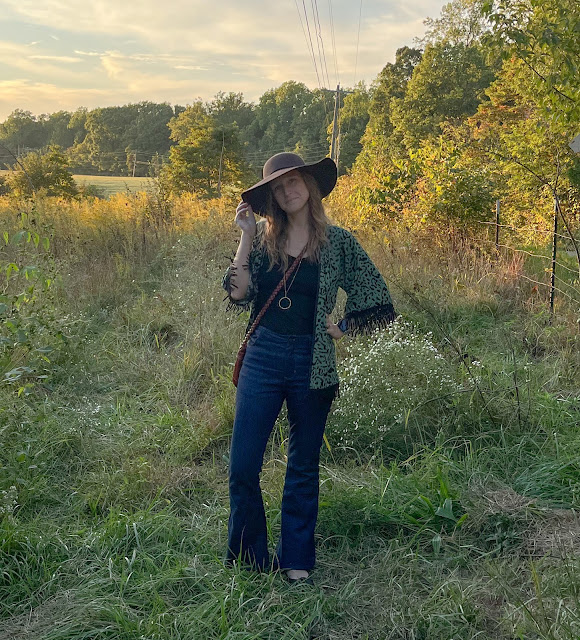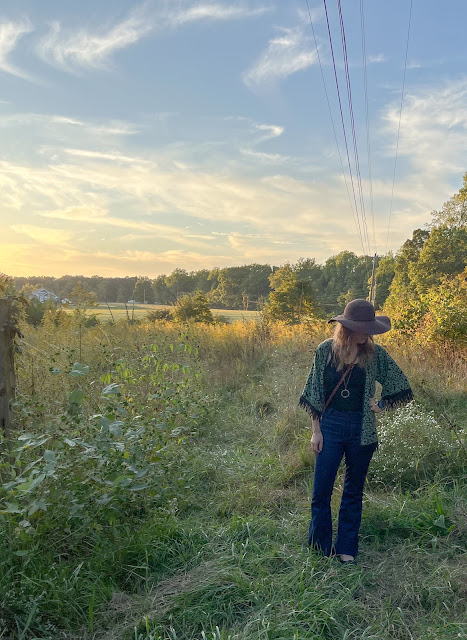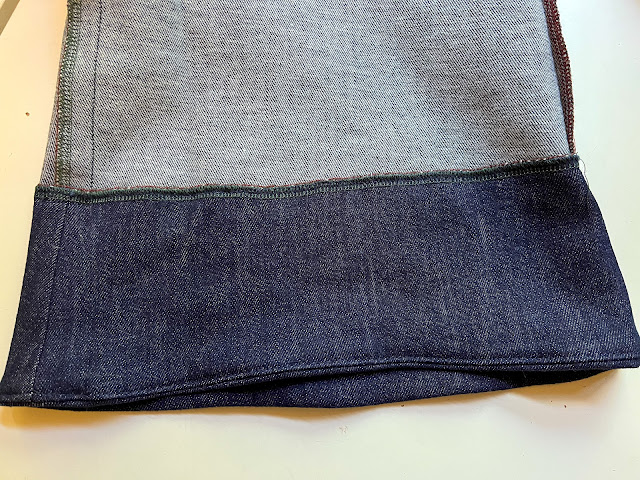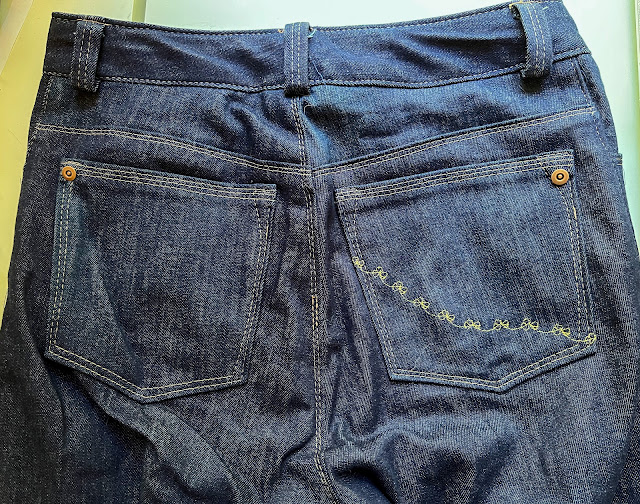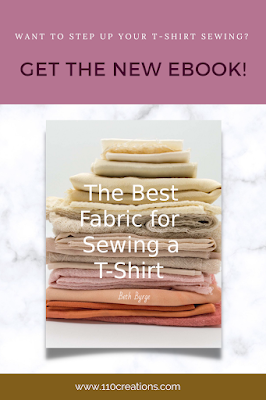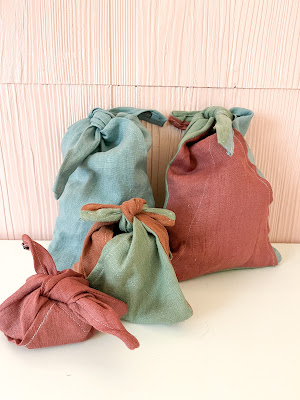Ash comes with four leg views: Slim, Skinny, Flared, and Wide. The rise is undefined by MN, I would call it mid to slightly high (hits under my belly button). There are also two pocket depth options, something I've never seen before. It is intended for denim with 15-20% stretch.
I used Cone Mills S-Gene Stretch Denim in Dark Indigo, 8oz weight. I have tried a variety of weights, and this 8oz is my favorite. I usually buy mine from LA Finch Fabrics because they have the best prices, and often sell "remnant" pieces in 1.5 yard cuts.
Per usual, I had three machines going at once while making this pair of jeans. I used my regular Brother for construction, back pocket embroidery, and the buttonhole. I used my serger for finishing seams, and my vintage Singer 15-91 for all topstitching. It is SO nice to have a second machine for topstitching so you don't have to switch thread back and forth. I'm spoiled.
I made a size 6 for my 27" waist and 37" hip. I recommend taking your measurements every time you sew pants, don't make assumptions about your size. I've been a 38" hip for a long time, but the 8 would've been too big. I would also say 27" isn't an accurate description of my waist, it's more like the size of my waist when I'm wearing pants that fit the way I like. With stretch jeans, you can get away with sewing for the waist you want, not the waist you have! It's also more functional that way, because my pants don't slide down from being too loose in the waist.
There are two choices in inseam, regular or tall. Then each of those have a full or cropped option. I am 5'4" and made the regular, full length inseam, and found it a touch short for the flared option. For the slim or skinny I think the inseam would work, but for the flare or wide my personal preference is for jeans to touch the floor. I ended up letting out the hem and adding a wide hem facing so that I could sneak back every bit of length possible.
I am blown away by how well these fit right out of the envelope. I'm trying really hard to review Ash without comparing it to Ginger (I'll save that for another post) but for jeans, I'm used to making a lot of adjustments. The only thing I changed was to remove a tiny wedge from CB in the yokes and waistband. I have a bit of a swayback and unless I make that change, I always end up with gaping. That's it! I still cannot believe it.
The instructions for assembly are better than any I've ever used. Right/left, wrong side/right side, when to use topstitching thread and when to use regular thread, all those details were there without error. If you've never made jeans before, Ash could easily be a beginner jeans pattern. There is also a sewalong, but I didn't need it at all.
The fiddly bits of the pattern, like the fly or back pockets, were not graded into individual sizes. That might sound like a criticism, but it's not. It made cutting the pattern out so much faster not to have to worry about sizing something silly like a coin pocket. I had my pattern printed in large format at PDF Plotting.
I made the jeans as directed, except for two changes. I used a stretch interfacing in the waistband and waistband facing (there wasn't any interfacing at all in this pattern). I also added bias tape to the waistband facing edge. I *hate* turning under the waistband facing and trying to topstitch or stitch in the ditch or whatever. Plus, pretty guts!
I cannot say enough good things about this pattern! If I ever find 8oz S-Gene denim in black I will buy 100 yards and make each view. If you've been on the fence about jean sewing this fall, grab Ash and get to work!

